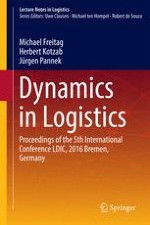These proceedings contain research papers presented at the 5th International Conference on Dynamics in Logistics, held in Bremen, Germany, February 2016. The conference is concerned with dynamic aspects of logistic processes and networks. The spectrum of topics reaches from modeling, planning and control of processes over supply chain management and maritime logistics to innovative technologies and robotic applications for cyber-physical production and logistic systems. The growing dynamic confronts the area of logistics with completely new challenges: it must become possible to describe, identify and analyze the process changes. Moreover, logistic processes and networks must be redevised to be rapidly and flexibly adaptable to continuously changing conditions. The book primarily addresses researchers and practitioners from the field of industrial engineering and logistics, but it may also be beneficial for graduate students.
